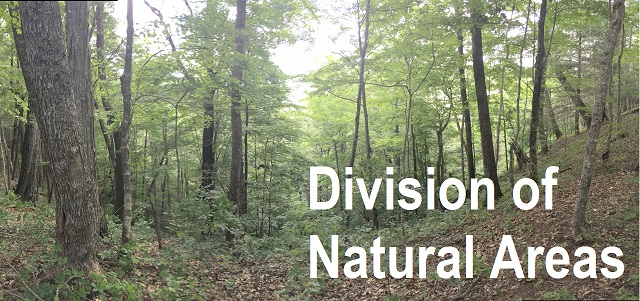Title
Spatiotemporal dynamics of a- and b-diversity across topographic gradients in the herbaceous layer of an old-growth deciduous forest
Document Type
Article
Publication Date
12-2013
DOI
10.1111/j.1600-0706.2013.00544.x
Abstract
Understanding the factors that regulate biodiversity over spatial and temporal gradients is an important scientific objective with ramifications for theory and conservation. Species composition is known to vary across spatial gradients, but how this spatial variation is linked to temporal dynamics is less well studied. Our objective was to understand how Shannon (α) diversity, spatial species turnover (Bray-Curtis dissimilarity), and temporal species turnover (Bray-Curtis dissimilarity) varied with regard to three topographic gradients (aspect, slope and elevation) over one growing season. In April, June and August of 2011, the herbaceous layer was sampled in 320 1-m2 plots within Big Everidge Hollow, an old-growth forest in southeastern Kentucky. Multiple regression models revealed that Shannon diversity was linearly related to aspect (negative) and slope (positive), but unimodally related to elevation, indicating steep, mid-elevation, and south-facing plots were most diverse. Distance decay analysis showed that significant spatial species turnover occurred across all three topographic gradients, but aspect and elevation had a greater influence on compositional dissimilarity than slope. Mean temporal species turnover was significantly greater (p < 0.001) between April and June (0.39 ± 0.02 SE) than between June and August (0.20 ± 0.01). April-to-June turnover was related to aspect (linear) and elevation (quadratic; r2= 0.23, p < 0.0001), suggesting greater temporal species turnover occurred on north-facing and mid-elevation plots during this period; however, June-to-August turnover was weakly related to slope only (positive linear; r2= 0.08, p = 0.006). Environmental heterogeneity generated by topography is one of many factors that may constrain or promote biodiversity through space and across time, and a solid understanding of these spatiotemporal patterns of diversity can benefit both conservation and ecological theory.
Recommended Citation
Chapman, J.I., and R. W. McEwan. 2013. Spatiotemporal dynamics of a- and b-diversity across topographic gradients in the herbaceous layer of an old-growth deciduous forest. Oikos 122:1679–1686. doi:10.1111/j.1600-0706.2013.00544.x



Comments
"Th is work has been supported by the University of Dayton Office of Graduate, Professional and Continuing Education through the Graduate Student Summer Fellowship Program and by the Eastern Kentucky University Division of Natural Areas. We would like to thank Rob Watts, site supervisor at Lilley Cornett Woods for his help and advice and Melinda Wilder at EKU for providing field technicians Kaitlin Perry, Sarah Shewmaker and Kira Krick. We also thank the folks at Linefork/Kingdom Come Community Center for their hospitality. Lastly, we thank Dr. Shuang-Ye Wu for her help with ArcGIS and Dr. Todd Hutchinson for his help confirming identification of some ‘unknown’ species." (p. 1685)